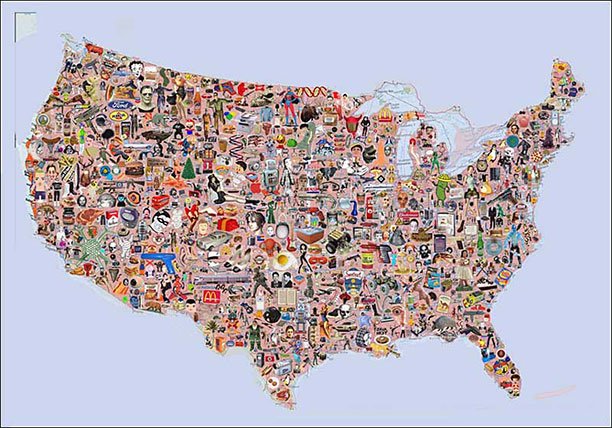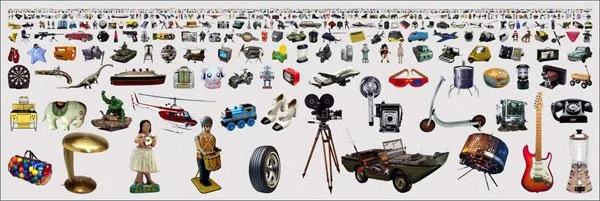Snowcrash
I was considering the ideas of limited space, real estate, and cataloging of populations. combined with formal devices for the organization of small multiples ranging from vistas to flatland, from panoramas to page spreads. They consist of thousands of photographs, primarily of people, taken in various locations. I also work with images of things. I think of them as cultural portraits and visually percussive formal arrangements. The process involves shooting over 200 photographs a day, for several weeks. I invade personal space. I’m aware as I put the images together of the balance between traditional ideas of pristine digital graphic techniques versus the painterly aesthetic, allowing digital rips and loose extractions equating to drips and gesture in the painter's world, and the obsessive activity of cutting, pasting, reducing and combining hundreds or thousands of images together, often without a formula, allowing for redirections and changes.
Snowcrash is a book by author Neal Stephenson. In it he describes a virus that infects people in real and virtual environments. I've used it in my own work to depict large masses of humans, cement paved virtual spaces, and culturally transmitted codes of consumption.
Any political or cultural critique is entirely unintentional or subservient to the process of making. When issues of gender, age, disability, poverty and wealth emerge in the groups, they are noted, noticed, and delegated to their spot. There are no stars, only a cast of thousands.
Photographs were taken using an old Canon 3 megapixel G1. The people were cut out and placed in an initial holding canvas, and then transferred to the main grid. Canvas sizes are 30 x 92”wide, 150 dpi. File sizes range from several hundred meg to a gig or more. I was working on a g5 dual processor Mac with 2 gig of RAM and 3 160 gig hard drives.






